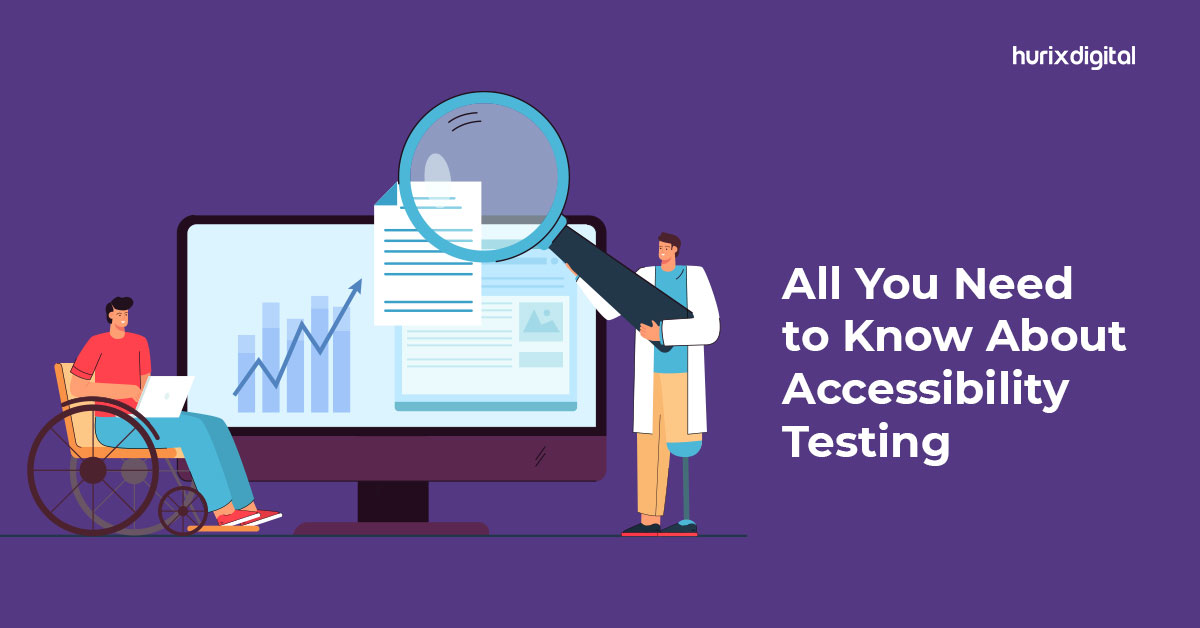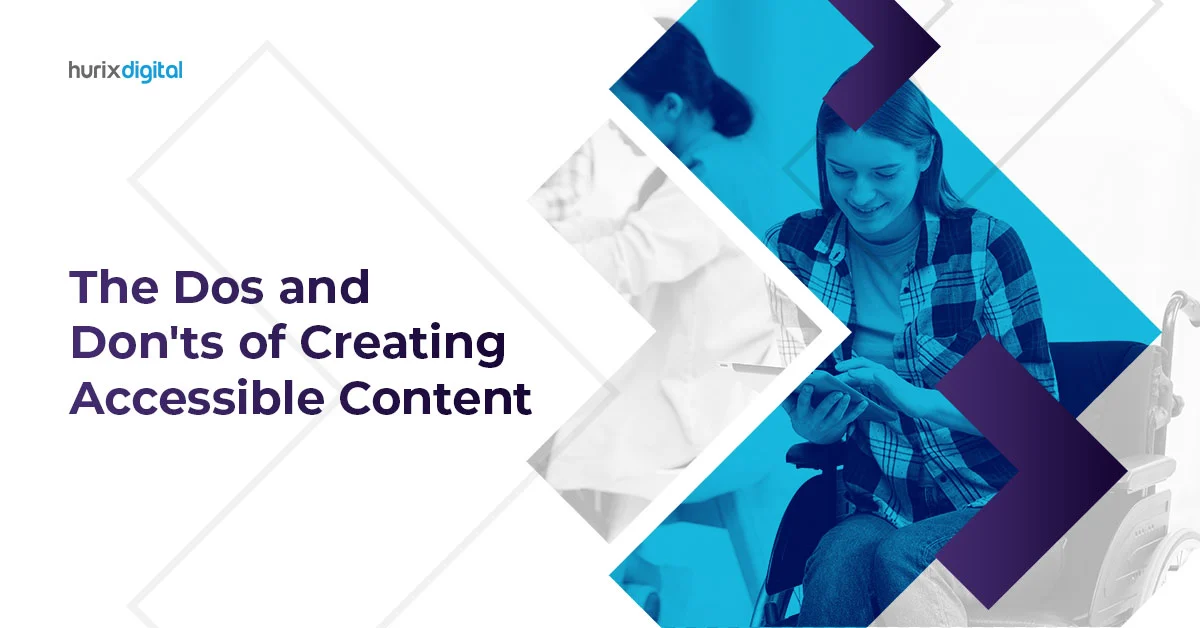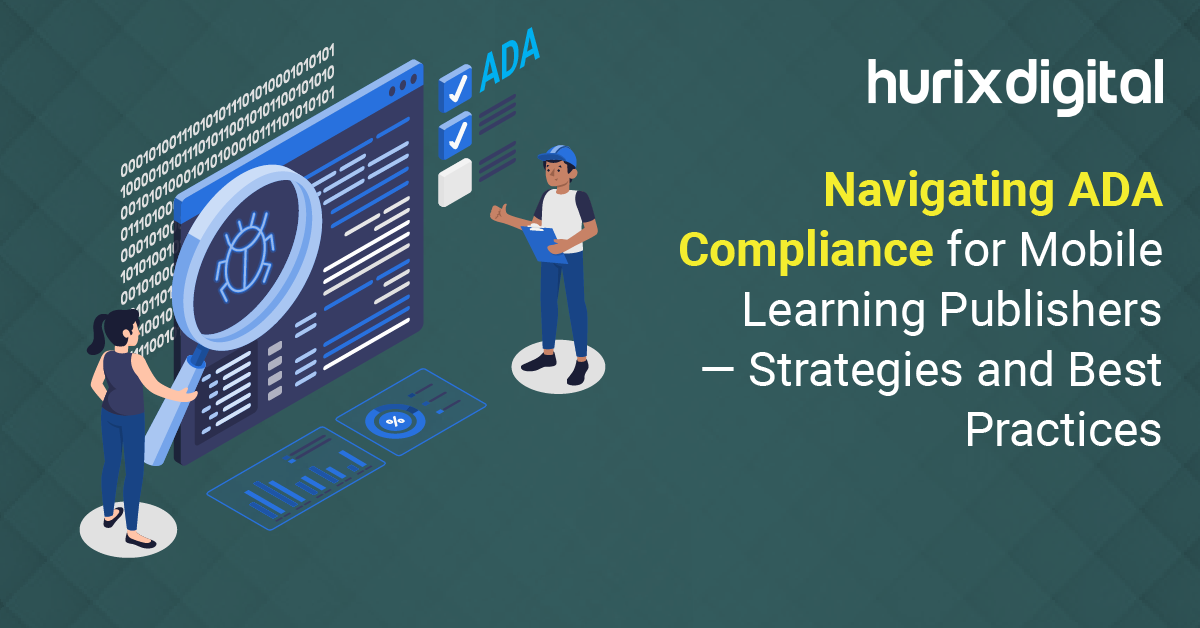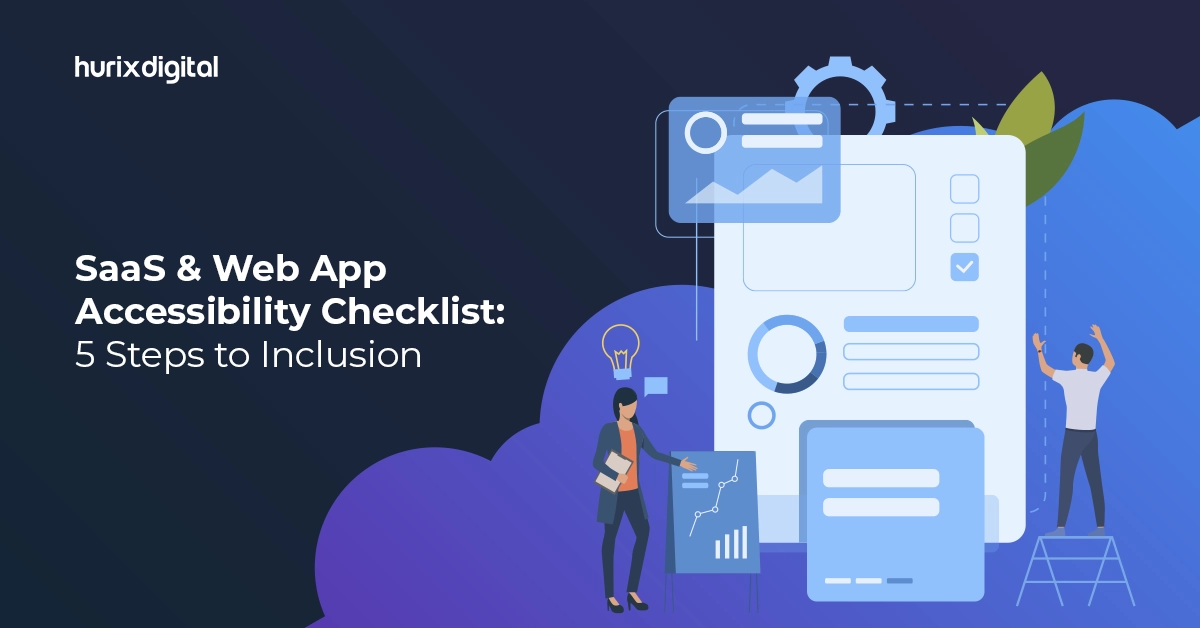
Accessibility Testing: All You Need to Know About Accessibility Testing
Summary
This blog involves confirming content is reachable, covers key guidelines, and works with assistive technologies. Performing accessibility testing manually and via automation tools is key for an inclusive product. Accessibility testing ensures web applications are usable for all users, including those with disabilities.
Every business aims to expand the reach of its software application to the maximum number of users possible. However, many businesses fail to do so simply because the implementation or design of the application doesn’t keep every kind of end-user in mind.
A weak testing strategy can keep your application from being accessible to all. As per the World Health Organization (WHO), 16% of the global population lives with a disability, which makes accessibility testing important. In this article, we will cover everything you need to know about accessibility testing.
Table of Contents:
- What is Accessibility Testing?
- Rules and Regulations Governing Digital Accessibility
- Which Disabilities Should Accessibility Testing Support?
- Facts and Myths about Accessibility Testing
- Importance of Accessibility Testing
- How to Perform Accessibility Testing?
- Accessibility Test Scenarios/Checklist
- Conclusion
What is Accessibility Testing?
In software QA, accessibility testing is the practice of confirming that all the content within your web application is usable or reachable to as many people as possible, including people with disabilities like hearing problems, vision impairment, and cognitive conditions.
In other words, testing a web application to ensure that anyone can easily access the website is known as accessibility testing.
Testing teams usually make use of accessibility testing tools while performing these tests to make sure their applications are compatible with assistive technology, including screen reader software, speech recognition software, special keyboards, and screen magnification software.
Rules and Regulations Governing Digital Accessibility
These are some guidelines and laws for accessibility testing that must be followed:
- Section 504 and 508 of The Rehabilitation Act of 1973: Section 504 accommodates all users with disabilities to access education, the workplace, and other organizations. Section 508 accommodates access to technology for everyone.
- Americans with Disabilities Act: This law states that all the domains like schools, public buildings, and organizations must make technology accessible to everyone.
- The Web Content Accessibility Guidelines (WCAG): These protocols suggest types and examples of accessibility testing so that QA and development teams can discover ways to improve the accessibility of a website.
Which Disabilities Should Accessibility Testing Support?
The following are some common disabilities that accessibility guidelines try to address:
| Type of Disability | Disability Description |
| Physical Disability | Not able to use the keyboard or mouse with one hand. |
| Vision Disability | Complete blindness or poor vision or color blindness |
| Hearing Disability | Hearing impairments and auditory problems like deafness |
| Literacy Disability | Reading problems |
| Cognitive Disability | Poor memory or learning difficulties |
Facts and Myths about Accessibility Testing
| Myths | Facts |
| It is expensive to create an accessible website. | Accessibility testing is not expensive if you identify accessibility issues at the design phase besides extensive testing. This not only helps in reducing costs but also saves a lot of rework. |
| Converting inaccessible websites to accessible websites is a time-consuming process. | It is not essential to incorporate all the changes at the same time. You can prioritize things and work on the basics first. |
| Accessibility is boring and plain. | Accessibility doesn’t mean that a web page must contain only text. You can make websites attractive by adding images, but they should be accessible to all. |
| Accessibility is for disabled and blind people. | Accessibility guidelines aim to improve the overall usability of the software, which is helpful for regular users as well. |
Importance of Accessibility Testing
The following are some of the benefits of accessibility testing:
- Expands audience reach and increases market share.
- Efficient and easy access to users with challenges or disabilities.
- Compliance with legal requirements and helps follow ethics.
- Improves maintainability and supports internationalization.
- Assists in providing access to low-bandwidth users.
How to Perform Accessibility Testing?
You can perform accessibility testing both manually and with the help of automation. First, let’s see how to perform accessibility testing manually:
A. Manual Method
Though several tools are available in the market for accessibility testing, there might be some issues like budget, lack of skilled resources, etc. To overcome these problems, you can perform accessibility testing manually.
The following are some ways to test web page accessibility manually:
a.1. Turn Off Access to Images – Some users may not have access to images, or sometimes it takes a long time to load them. By turning off access to images temporarily, for the time being, you can see if the text justifies the content.
a.2. Use the High-Contrast Mode – To highlight the content of the website, you can use a high-contrast mode. When you turn on the high contrast mode, the website content turns yellow or white and gets highlighted automatically as the background turns black.
a.3. Turn Off the Cascading Style Sheet (CSS) – CSS is usually used to explain the presentation of the document. By turning this off, you can check for the text style, background color, and text presentation style.
a.4. Check for Captions – Check if a caption is visible and ensure it is expressive. For example, while accessing the Facebook app, often the images or videos take a long time to load, but the captions help in understanding the content of the pictures or videos.
B. Automation Method
Automation is becoming increasingly popular in the testing field. The following are some tools to perform accessibility testing:
b.1. WebAnywhere – WebAnywhere is an open-source tool that serves as a web-based screen reader for the web. The screen reader enables blind people to access the network from any device. The tool doesn’t require any special installation. This helps users read the web page as it is easily accessed on any device.
b.2. aDesigner – The aDesigner tool developed by IBM helps test the software from the perspective of visually impaired persons. Thus, designers can identify the requirements of people with disabilities and create applications accordingly.
b.3. Hera – Hera is a web accessibility testing tool based on the WCAG requirement. It finds automatically detectable issues and helps in manual modification by highlighting the parts of the page. It also checks for the style of the application and comes with multilingual options.
b.4. TAW – TAW is a tool that helps in checking if the software is developed in agreement with the W3C web accessibility guidelines. It also provides the option of choosing the level of analysis. The tool displays the accessibilities problems and classifies them as priority 1, priority 2, and priority 3.
b.5. Wave – Wave is an open-source tool introduced by WEBAIM. It is a web accessibility tool that ensures that writers make their content more accessible to physically challenged people. It makes sure that your accessibility reports are protected and 100% isolated.
Accessibility Test Scenarios/Checklist
The following are some points that need to be verified while performing this type of testing:
- Whether the labels are correctly placed and written
- Whether the color contrast ratio is maintained
- Whether the video/audio content is properly visible/audible
- Whether the short keys are provided for the menu and if they are working fine
- Whether the instructions are provided
Conclusion
Accessibility testing simply involves how easily one can access, navigate and understand software. The tester should perform the testing from everyone’s perspective. Their aim should be to verify if the guidelines are fulfilled or not and how easily users can use the software.
If your team requires more guidance on integrating accessibility services within your development cycle, choose to team up with a reliable service provider like Hurix Digital. With years of experience and a team of experts, our accessibility solutions can help your team implement best practices for accessibility.

Vice President – Content Transformation at HurixDigital, based in Chennai. With nearly 20 years in digital content, he leads large-scale transformation and accessibility initiatives. A frequent presenter (e.g., London Book Fair 2025), Gokulnath drives AI-powered publishing solutions and inclusive content strategies for global clients








